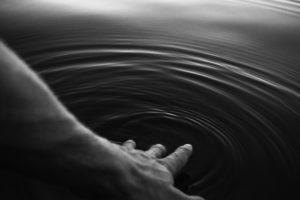When We Can Keep You Safe, Part 2
Vermont is allowing massage practices and other close-contact businesses to reopen June 1 under certain conditions (details here in section 8.1).
Our office does not meet the requirements to open. Even if it did, we would remain closed. Personal protective equipment (PPE) and pathogen-inhibiting ventilation (which Vermont is not requiring!) would, at best, keep you and keep us safer—not safe—from contracting or transmitting the virus that causes COVID-19.
We will resume practicing massage when reliable, evidence-based safe-practice protocols are available, or, much more preferably, when the overall community infection rate remains low enough long enough that infection is no longer a cause for concern.
Chris’s and my medical providers agree that massage is a higher-risk activity. High-risk people should not participate. I would not participate because of the risk of infecting my husband and business partner, who is high-risk, as well as my high-risk clients and clients’ high-risk family members. The massage profession’s leading pathology teachers and researchers agree that the only safe massage is when both client and practitioner are free of the infection, and we cannot know that’s the case. Anyone could be infected, and swab tests can produce false negative results. Sadly, cruise ships are among the unwitting experimental settings demonstrating we cannot know who’s infected.
“. . . of the 217 passengers and crew on board, 128 tested positive for COVID-19. . . . And of those 128, just 24 showed symptoms. The remaining 104 COVID-19 patients, or 81 percent of the ship, were asymptomatic.” (People magazine, May 28, 2020)
In massage, two people spend 30–90 minutes in a small, enclosed space, breathing, sweating, eyes tearing, coughing, and sneezing. This launches aerosolized pathogens into a room that’s rarely as ventilated as a hair salon, never mind ventilated as a medical facility would be, which is done precisely to mitigate pathogen transmission among people in enclosed spaces. Even in medical facilities so equipped, medical staff continue to contract the virus because PPE and ventilation offer no guarantees.
And medical staff are trained and practiced at using professional-level PPE properly. Almost no massage therapists are. Chris and I consider it unethical to allocate precious medical-grade PPE to massage therapists and others not performing essential medical care and support. Many in our profession agree.
Massage is not essential medical care; it is comfort care. Chris and I so wish we could help people who are suffering and would normally find relief in massage. But it’s not safe for anyone to seek the comfort care of massage right now.
- If you are a massage provider who, like us, has had your beloved livelihood waylaid, please pause.
- If you are a massage client who just can’t wait to get back onto the massage table, please pause.
Consider what you are risking for yourself and everyone you contact: a devastating, life-changing, potentially fatal disease. Consider that you are asking massage therapists to risk themselves and their families and contacts with every client they see, including all our other clients.
We miss working with you so much. We are massage therapists because we care. For now, we are not doing massage because we care.

